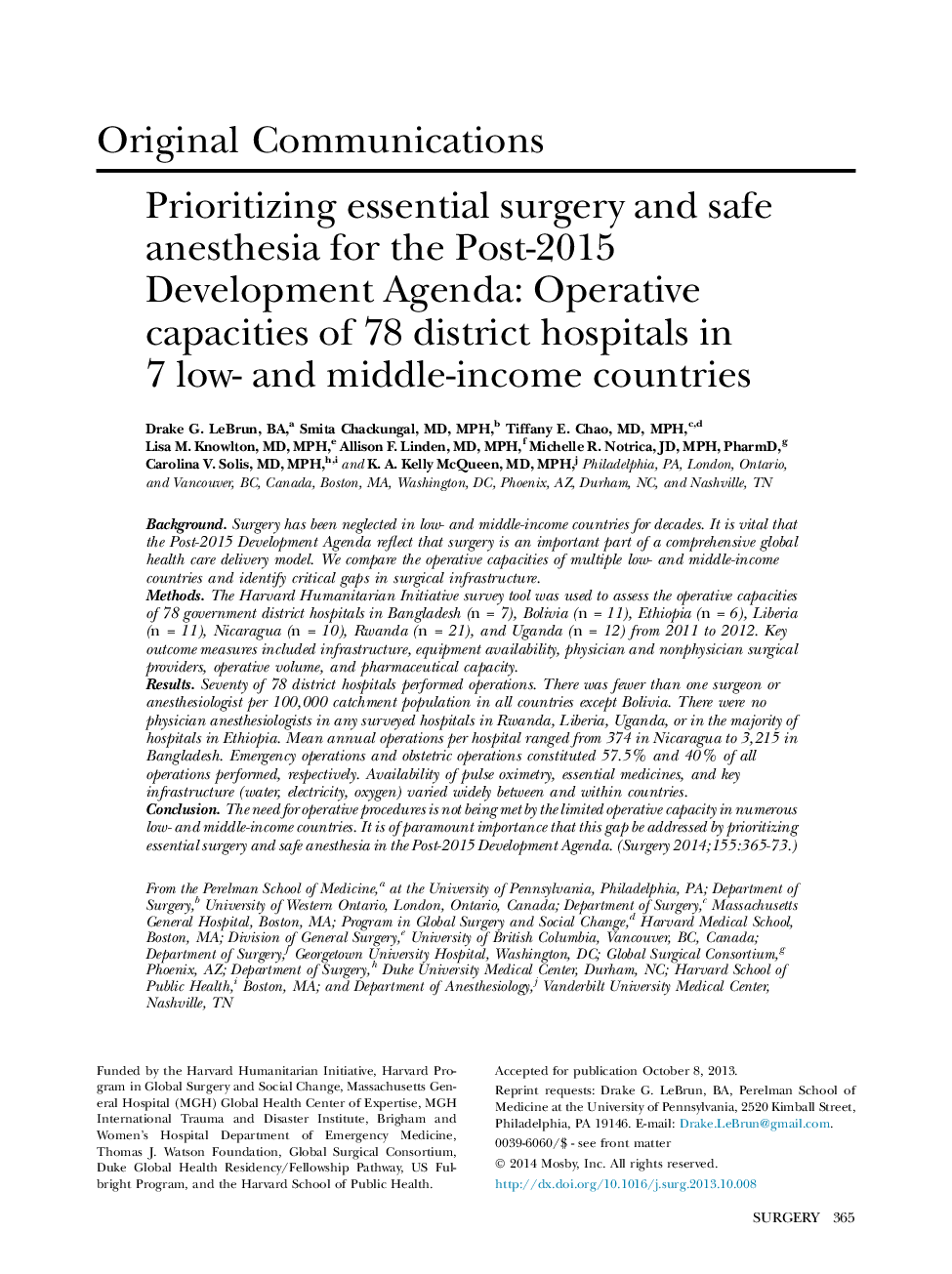| Article ID | Journal | Published Year | Pages | File Type |
|---|---|---|---|---|
| 6255555 | Surgery | 2014 | 9 Pages |
BackgroundSurgery has been neglected in low- and middle-income countries for decades. It is vital that the Post-2015 Development Agenda reflect that surgery is an important part of a comprehensive global health care delivery model. We compare the operative capacities of multiple low- and middle-income countries and identify critical gaps in surgical infrastructure.MethodsThe Harvard Humanitarian Initiative survey tool was used to assess the operative capacities of 78 government district hospitals in Bangladesh (n = 7), Bolivia (n = 11), Ethiopia (n = 6), Liberia (n = 11), Nicaragua (n = 10), Rwanda (n = 21), and Uganda (n = 12) from 2011 to 2012. Key outcome measures included infrastructure, equipment availability, physician and nonphysician surgical providers, operative volume, and pharmaceutical capacity.ResultsSeventy of 78 district hospitals performed operations. There was fewer than one surgeon or anesthesiologist per 100,000 catchment population in all countries except Bolivia. There were no physician anesthesiologists in any surveyed hospitals in Rwanda, Liberia, Uganda, or in the majority of hospitals in Ethiopia. Mean annual operations per hospital ranged from 374 in Nicaragua to 3,215 in Bangladesh. Emergency operations and obstetric operations constituted 57.5% and 40% of all operations performed, respectively. Availability of pulse oximetry, essential medicines, and key infrastructure (water, electricity, oxygen) varied widely between and within countries.ConclusionThe need for operative procedures is not being met by the limited operative capacity in numerous low- and middle-income countries. It is of paramount importance that this gap be addressed by prioritizing essential surgery and safe anesthesia in the Post-2015 Development Agenda.
